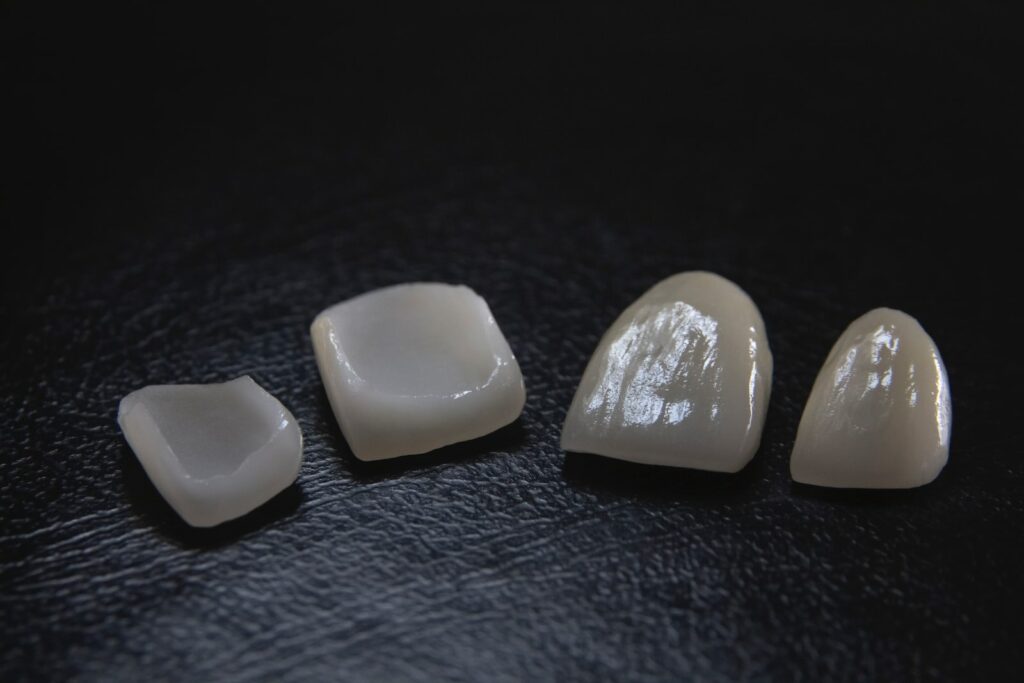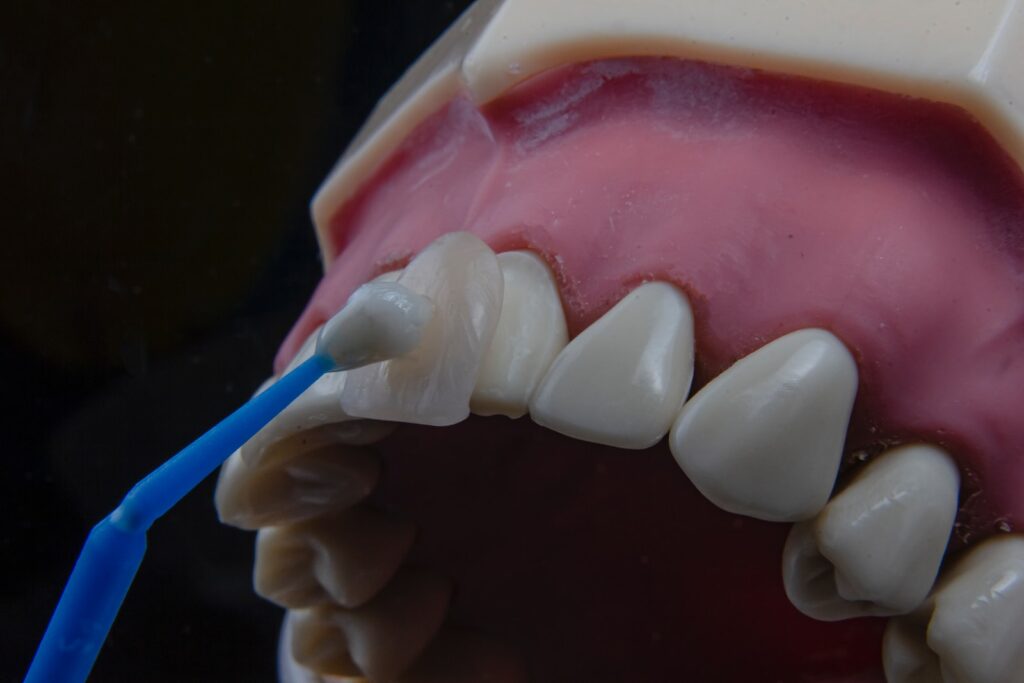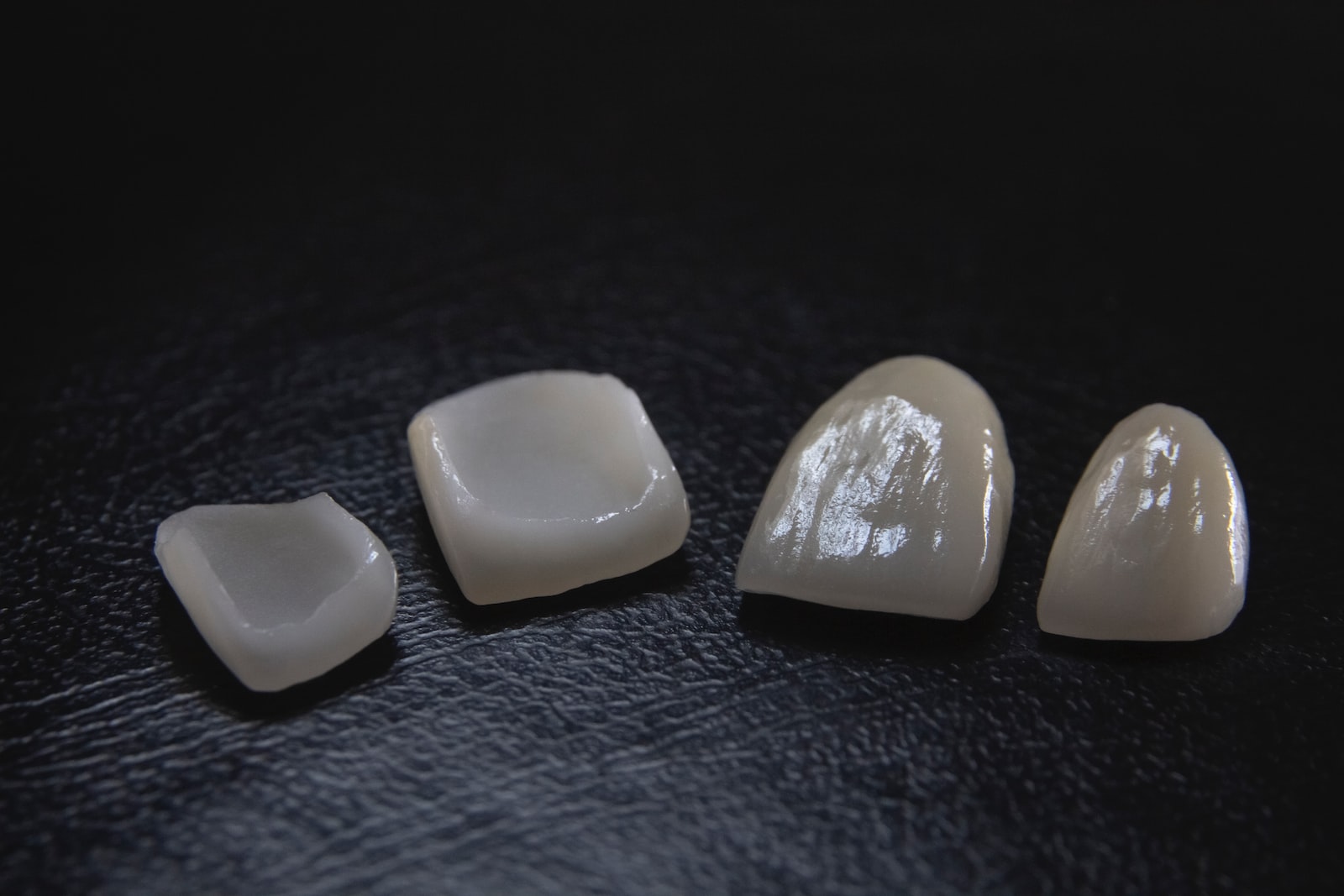Teeth Bonding vs. Veneers: What You Didn’t Know
Teeth bonding vs. veneers – which is better for you? This question may have crossed your mind if you are looking to achieve and maintain a natural and beautiful smile. Are you interested in cosmetic dentistry to enhance your appearance and look bold and more beautiful in those Instagram pictures? Perhaps, you would like to correct a distracting and unsightly chip or gap in your teeth. On the other hand, you may be looking to brighten your worn, discolored, or stained teeth.
If you are uncomfortable about your teeth or find yourself avoiding photos, Mint Dental offers highly effective and safe dental procedures, such as veneers, to improve your teeth so you can feel confident and great!
Many people in Minnesota have one or more aspects of their smile that they want to improve. Are you one of them? Addressing these concerns or dental issues will help you feel more confident and assured in your smile and life, allowing you to show off your toothy smile with pride. Isn’t that awesome!

If you are in the habit of disguising your smile and pearly whites with your hand, you may wonder which cosmetic procedures will help you achieve the smile of your dreams. Teeth bonding vs. veneers – which is right for you? Cosmetic or dental bonding and porcelain veneers are two cosmetic dentistry procedures that treat similar dental issues and cosmetic blemishes.
Both procedures have specific advantages and drawbacks. This is why your choice will depend on your dental needs, preferences, and budget. In this post, we will consider and compare teeth bonding vs. veneers to help you know and understand how dental bonding and veneers work.
In This Article:
- Understanding the Basics
- What is Teeth Bonding?
- What are Veneers?
- Teeth Bonding vs. Veneers – Main Differences
- Teeth Bonding vs. Veneers – Which Option is Right for Me
- Get the Smile of Your Dreams with Mint Dental MN
Understanding the Basics
When considering teeth bonding vs. veneers, it is common to question if you’re a better candidate for teeth bonding or porcelain veneers as they share some similarities. The good news is that regardless of your final decision, you’ll love and embrace your newly improved and confident smile.
Porcelain veneers and teeth bonding are two ways to improve the beauty of your smile and make it look more attractive. You will be happy to know that both dental treatments can address common cosmetic concerns and issues, including cracks, discoloration, chips, and gaps.
If you choose teeth bonding, your dentist will apply a resin to the surface of your teeth and cure it with a special light. Why the light? This light will harden the material, ensuring that it securely adheres to your teeth. In contrast, veneers are thin, custom-made restorations that will be bonded to the front surface of your teeth. Each dental treatment can be an ideal choice for you, given the right circumstances.
What is Teeth Bonding?
Also known as cosmetic bonding, teeth bonding uses a composite material that dentists use to fill cavities. During teeth bonding, your dentist will apply and harden a composite resin material to the damaged surface or area of your teeth. As a result, your tooth will ‘bind’ and go back to its natural position.
One benefit of the composite resin is that it can be color-matched to blend seamlessly with any patient’s natural teeth. Teeth bonding is a conservative, simple, non-invasive, and reversible dental treatment that can correct and improve the natural shape and look of your teeth.
The main benefit of dental bonding is that it is non-invasive and safe and can correct many imperfections and concerns ranging from gaps and spacing to tooth discoloration. A dentist will prepare the surface of the tooth with an etching liquid.
After that, they will apply, position, and shape the bonding material to meet your specific cosmetic needs and concerns. During the final step, the dentist will harden the bonding material with a special light before making any small adjustments, if needed.
Who is a Suitable Candidate for Teeth Bonding?
You can benefit from dental bonding if you’ve minor cosmetic blemishes, such as cracks and discoloration. Professionals use the bonding material to rebuild your tooth after it is damaged or to address the following concerns:
- Chips and cracks
- Minor cavity or stain
- Gaps
- Misshapen teeth
What are the Benefits of Teeth Bonding?
Teeth bonding has multiple purposes. For example, it can act as both a medical and cosmetic procedure. Dental bonding can improve the appearance of your teeth and can also cover exposed tooth roots that often happen because of receding gums.
Unlike porcelain veneers, very little or no preparation is required before the operation. Teeth bonding does not entail removing enamel or filing down your tooth, which makes it less invasive than porcelain veneers.
Did you know that teeth bonding is also considerably quicker and more affordable compared to veneers? As it is an extremely easy procedure, your dentist may be able to complete dental bonding in only one visit, which is convenient if you don’t want to visit the dentist’s office repeatedly.
The Downsides of Teeth Bonding
The main drawback of dental bonding is that it does not look as natural as veneers. This means that you will have to keep up with your teeth cleaning routine and don’t get complacent. This is because the resin can easily stain like natural teeth.
Also, bonding doesn’t whiten with tooth whitening the way your natural teeth do. Hence, they may have to be replaced every couple of years when they become stained or discolored. And like veneers, teeth bonding is not as strong as regular teeth. So, you will have to avoid chewing on hard objects. These are some things you should consider when choosing teeth bonding vs. veneers.
The Dental Bonding Procedure:
Before you get dental bonding, you should be aware of the procedure. So here’s an overview before getting one.
1. Tooth Preparation
The first step in dental bonding is to clean the tooth. Your dentist then uses a shade guide to choose the composite resin material that fits the color of your natural teeth.
Your dentist will roughen your tooth’s surface and apply a conditioning liquid. It helps the resin bond better to the tooth.
2. Applying Resin
Next, the dentist puts the resin on the tooth and shapes it. When the resin is in the right shape, a special light is used to harden it.
3. Polishing The Tooth
Finally, the bonded tooth is polished to give it a natural appearance.
What are Veneers?
You may have heard of veneers. They are thin porcelain shells that help cover the front of the teeth. Veneers are ideal for concealing gaps and correcting the appearance of crooked, misshapen, or stained teeth. This procedure takes more time and usually requires removing some tooth enamel and then reshaping the tooth.
You may have noticed celebrities, movie stars, and social media influencers with pearly whites and flawless smiles because of effective porcelain veneer treatment. Your dentist can transform a dull, awkward, or uneven smile into a brighter and more harmonious aesthetic appearance so you can feel and look more confident and appealing.
Your dentist will take preliminary impressions of your teeth and use them to make customized porcelain veneers for each tooth. And these will be prepared while you wear your temporary veneers. Once your customized porcelain veneers are ready, the dentist will remove your temporary veneers.
After that, they will use an adhesive to seal the permanent veneers to your teeth. As you can see, a small part of your tooth is removed to make sure that the veneer fits securely, giving you a smooth and even appearance.
Who would Most Benefit from Veneers?
If you are looking for a long-lasting and reliable cosmetic solution so you can show off your pearly whites with confidence, veneers are certainly the way to go. With veneers, you can get excellent and lasting results that look incredibly natural.
This makes it almost impossible to tell whether someone has veneers. Here are some conditions that teeth bonding usually can’t patch up perfectly:
- Severe discoloration and stains
- Cracked and chipped teeth
- Crooked teeth
- Large gaps
- Eroding teeth
Benefits of Veneers
Veneers are durable and look incredibly natural. Also, they are very resistant to changes in appearance over time and even resist tough stains from pigmented beverages, such as wine and coffee, and serious tar stains from smoking. Isn’t that great! You will be pleased to know that veneers are sturdy and can last for decades with proper oral care, making them an excellent cosmetic investment. With dental veneers, you can be confident in showing your beautiful and toothy smile time and again.
Depending on your smile goals, you can use a veneer to mask one injured or discolored tooth or use it to cover multiple teeth to create a healthy and sparkling white that does not fade.
What are the Drawbacks of Veneers?
Before applying veneers, your dentist will have to prepare your teeth. Some teeth enamel will be removed in order to securely cement the veneers. So, once they are on, veneers are on for life. This is why veneers are a lifelong investment. They are irreversible and require a full commitment. Veneers are more expensive, making many patients consider this option twice before committing to it.
The Process Of Getting Veneers:
When you get veneers, there are usually a few steps involved, such as consultation, preparation, and placement. Here is a general overview of the process of getting your veneers:
1. Consultation Appointment
The first thing you need to do is make an appointment with your cosmetic dentist to talk about which options are best for you and the number of veneers you want.
At this point, your dentist takes X-rays of your teeth in order to see how healthy they are. They will look for indications of missing teeth, cavities, gum disease, or a need for root canal treatment. If you have any of these problems, veneers might not be a good choice for you.
2. Tooth Preparation
If your dentist considers you a suitable candidate for veneers, they might use a dental scanner and dentistry software to show you what the final result will look like.
Depending on the recommended veneer type, your dentist may need to remove a small amount of surface tooth enamel to make room for restoration.
However, low-prep veneer options are available for many patients requiring little to no enamel removal. Once your teeth are prepared, digital scans will be taken, and the smile design process will begin.
3. Temporary Veneers Placement
The dentist will use the digital scan to create your porcelain veneers. Your cosmetic dentist will place a temporary porcelain veneer to protect your smile until the final restoration is received from the lab.
4. Final Placement Of Veneers
Once your dental veneers are ready, you will return to the dental office. Your dentist may apply a local anesthetic to the treatment area to ensure your comfort during the procedure.
Your dentist will remove the temporary veneers that were applied. Then, the porcelain veneers are carefully cemented to your smile by your cosmetic dentist.
If you’re happy with how your veneers look and feel, your dentist will polish your teeth and make any changes needed to ensure that your new bite fits together naturally.
Teeth Bonding vs. Veneers – Main Differences

Although teeth bonding and porcelain veneers are both excellent options to address your cosmetic concerns, they have substantial differences when you consider the details of each dental treatment.
If you would like to correct a single tooth or fix a tiny chip, teeth bonding often makes the most sense. On the other hand, if you want to transform your smile, dental veneers or crowns can be the better option as they cover the entire tooth.
Veneers and Teeth Bonding Cost
Bonding is considerably less expensive than porcelain veneers. Although bonding can typically cost between $100 and $500, veneers can cost more than $1500 for each tooth. However, the long-lasting beauty and durability of veneers may make them a better value.
Time
Teeth bonding usually takes a single dental visit and is a smoother and faster procedure, whereas veneers may take two or more dental visits, especially for porcelain.
Maintenance
You should know that caring for dental bonding and porcelain veneers is pretty similar. For instance, you have to stick to a thorough oral hygiene routine. It is best to avoid activities that may break or damage the bonding material or porcelain, like playing sports without a mouthguard.
Teeth Bonding vs. Veneers – Which Option is Right for Me
Veneers and teeth bonding are similar treatments. Both are designed to improve the look of your teeth. So, your choice of treatment will depend on different factors, such as your specific situation and needs, and it is advisable to discuss these issues with your dentist for an individually tailored plan.
More on here: Dental veneers vs. implants: which treatment is right for you?
Get the Smile of Your Dreams with Mint Dental MN
If you’re looking for a dental office in Minnesota that provides a wide range of reliable and economical general, cosmetic, and restorative procedures, Mint Dental welcomes you to join our growing base of happy and satisfied patients. Teeth bonding vs. veneers? To determine which dental procedure is most suitable for your specific cosmetic needs and concerns, we recommend that you have a consultation with our dentists beforehand. Mint Dental MN provides veneers and whitening to meet your needs. Contact us now to schedule a consultation if you want to regain your beautiful smile.
Do you need crowns on your front teeth? Read all about it here.
